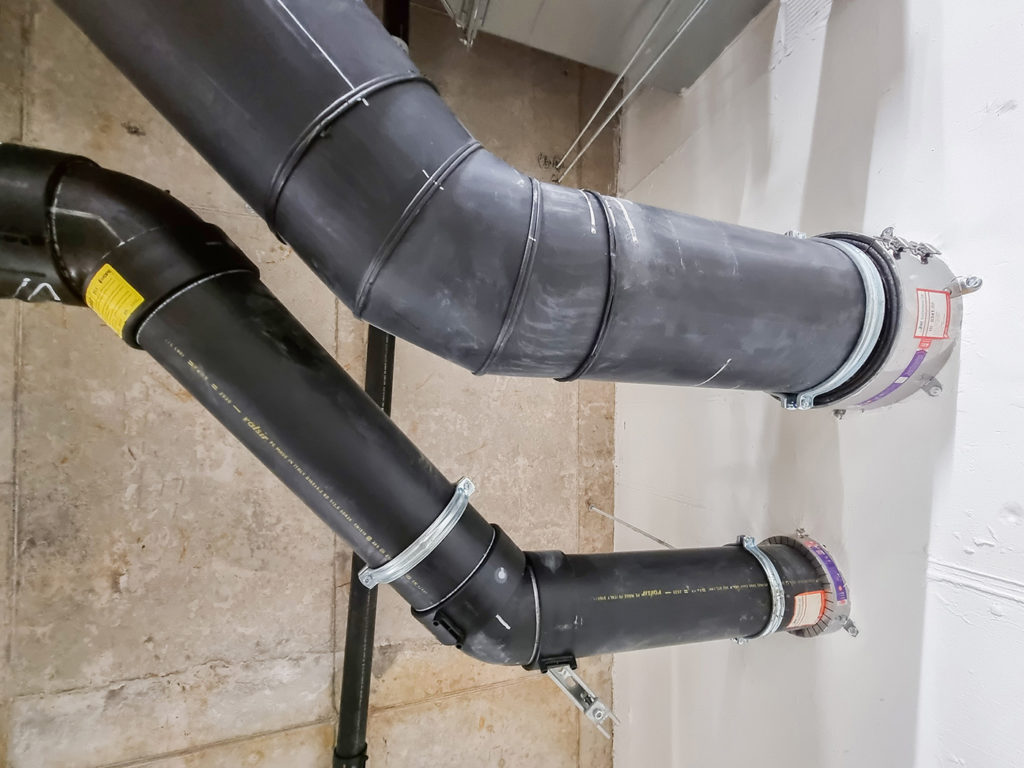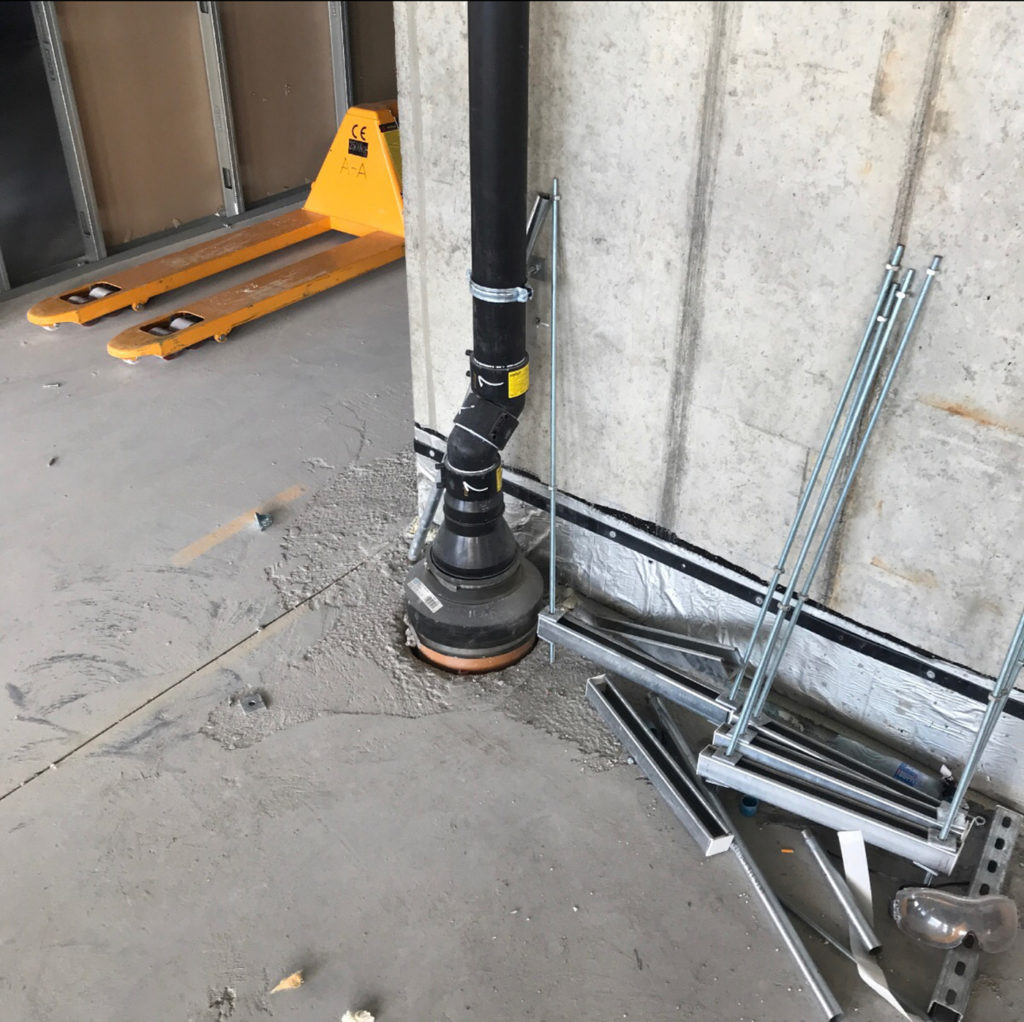Article
Siphonic Rainwater Drainage Termination Scenarios - How And When To Break Siphonic Action
What should we be aware of when breaking the siphonic action prior to the Rainwater Drainage termination point?
Breaking the siphonic action is typically accomplished by connecting the siphonic pipework to a larger diameter gravity pipework, allowing air to enter the system and causing a decrease in the velocity of the rainwater flow.
The exact location of the siphonic break varies depending on the system’s requirements. Let’s look at the three typical termination scenarios of any siphonic system.
Termination Scenario one
Connecting Siphonic Pipework to an Attenuation Tank

We can either
A. Connect the siphonic systems directly to the attenuation tank. This is generally the case with a pre-cast tank.
B. Connect to a gravity pipe just before entering the tank to lower the velocity of the rainwater. To minimise the number of connections to the tank, it may be necessary to combine the pipe with other gravity pipework before entering the tank.
Termination Scenario TWO
Connecting Siphonic Pipework to a Rainwater
Harvesting Tank

Termination Scenario Three
Connecting Siphonic Pipework to In-Ground Drainage

If the siphonic pipework is to be terminated to in-ground drainage, you can either:
A. Connect the siphonic to a gravity pop-up, above or below the finished floor level, where it flows via gravity drainage to the manhole as part of the civil drainage network. In this case, the gravity pipe must be sufficiently sized to cater to the siphonic system’s full discharge velocity.
B. Connect the siphonic pipework directly to the nearest manhole to the drop location.
In either case, it is recommended that the first manhole downstream be vented to ensure the system never becomes air locked.
In Conclusion
We are often asked if there is a mechanical requirement, such as a switch or special equipment, to break the siphonic flow prior to a termination point, however, no such mechanical intervention is required. The primary consideration is ensuring that the pipework or tank we connect to is suitably sized to cater to the peak discharge volume from a siphonic-induced flow.
Still have questions?
Meet Stephen Morris
Speak directly with our Design Lead, Stephen Morris with any questions related to siphonic or gravity rainwater drainage.








